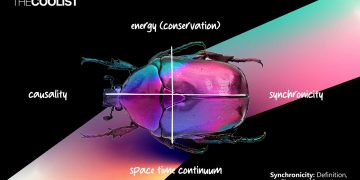Introduction: Defining the Metaverse and Its Promise to Reshape How We Interact Socially and Professionally
The concept of the metaverse has been a topic of both fascination and skepticism for the past few decades. Once confined to the pages of science fiction novels, the metaverse is now emerging as a tangible reality, thanks to advancements in virtual reality (VR), augmented reality (AR), and blockchain technology. But what exactly is the metaverse, and how will it affect our social lives?
At its core, the metaverse is an interconnected, immersive digital world where people can interact with each other and their environment in real-time. Think of it as a next-generation internet—one where physical spaces and digital experiences collide seamlessly, enabling users to socialize, work, play, and explore in entirely new ways. The metaverse isn’t just one platform but a collection of virtual worlds and applications that span different industries and use cases, from entertainment and gaming to education, remote work, and beyond.
The metaverse’s promise to reshape social interaction is immense. It offers the potential for a more interactive and engaging digital experience, one that goes far beyond the limitations of today’s social media platforms. Imagine attending a concert in a virtual stadium, meeting colleagues from around the world in a virtual office, or hosting a family reunion in a metaverse-powered living room. With these possibilities in mind, the metaverse could revolutionize the way we connect with one another, both socially and professionally. However, as exciting as these prospects are, the metaverse also raises a host of questions and challenges, many of which need to be addressed before it can truly transform society.
Current Platforms: Overview of VR, AR, and Online Multiplayer Worlds
The metaverse, as we know it today, is not a single entity but an evolving landscape of platforms, technologies, and digital experiences. These platforms leverage virtual reality (VR), augmented reality (AR), and multiplayer online worlds to create immersive environments where users can engage in social and professional activities.
- Virtual Reality (VR) Platforms
Virtual reality offers one of the most immersive ways to experience the metaverse. Using VR headsets, users can enter fully virtual worlds where they can interact with others, participate in games, attend events, or even explore new environments. Popular VR platforms such as Oculus, HTC Vive, and PlayStation VR are pushing the boundaries of what is possible in terms of interaction and immersion. VR enables users to create avatars, attend live events like concerts or conferences, and interact with other users in a lifelike 3D space.
One of the most well-known examples of VR’s potential in the metaverse is Horizon Worlds, a social VR platform developed by Meta (formerly Facebook). In this platform, users can create their own virtual environments, build games, and connect with friends in real-time, all while immersed in a fully virtual world. Similar platforms, such as AltspaceVR, Rec Room, and VRChat, allow users to interact with others in social spaces that replicate real-world experiences.
- Augmented Reality (AR) Platforms
While VR creates fully immersive virtual experiences, augmented reality overlays digital elements onto the physical world, enhancing the real-world environment with virtual objects and information. AR platforms like Microsoft HoloLens, Pokémon Go, and Google ARCore enable users to interact with digital elements in their surroundings, often through smartphones or AR glasses.
The metaverse incorporates AR as well, allowing users to blur the line between physical and digital spaces. For example, AR can be used to enhance social experiences by displaying virtual objects in the real world, allowing users to engage in new ways while physically present in their environment. As AR glasses and headsets become more advanced, the potential for AR in the metaverse will expand, offering more seamless and integrated experiences.
- Online Multiplayer Worlds and Social Spaces
Apart from VR and AR, online multiplayer platforms such as Fortnite, Roblox, Second Life, and Minecraft have also become integral components of the metaverse. These platforms already enable millions of players to engage in social and gaming activities in expansive virtual worlds. While these environments were originally designed for gaming, they are increasingly being used for socializing, attending events, and conducting business.
For instance, Roblox has become a social platform where users can create, share, and experience games and virtual environments with friends. Fortnite has hosted in-game concerts, movie screenings, and brand activations, attracting large audiences from around the world. These platforms demonstrate that the metaverse is not limited to a singular application but is a multi-faceted ecosystem that intersects with entertainment, gaming, and social interaction.
Social Impact: The Potential for Remote Work, Virtual Events, and New Forms of Social Interaction
The metaverse is set to change the way we interact socially, professionally, and culturally. By offering a more immersive and interactive experience than current digital platforms, it opens the door to numerous possibilities for human connection.
- Remote Work and Collaboration
The COVID-19 pandemic accelerated the shift toward remote work, and the metaverse offers the next evolution of this trend. Rather than relying solely on video conferencing platforms like Zoom, the metaverse allows for virtual offices and co-working spaces where employees can interact with one another in real-time, much as they would in a physical office environment. Virtual spaces can be designed to replicate office settings, allowing workers to communicate and collaborate via avatars.
Platforms such as Spatial and Microsoft Mesh are already exploring this concept. They allow for the creation of virtual meeting rooms, collaborative workspaces, and networking opportunities, all within a metaverse environment. These immersive virtual environments are designed to simulate the social dynamics of physical offices, allowing teams to meet, brainstorm, and problem-solve as if they were in the same room.
- Virtual Events and Experiences
The metaverse also promises to revolutionize the way we experience events, from concerts and conferences to theater performances and sports games. Virtual events in the metaverse can bring together global audiences who may otherwise never have had the opportunity to attend in person. Horizon Venues, AltspaceVR, and Virbela offer virtual event spaces where people can attend conferences, trade shows, product launches, and entertainment events as avatars in shared virtual environments.
One notable example is the Travis Scott concert in Fortnite, which attracted millions of viewers in a virtual space. These kinds of virtual events demonstrate the metaverse’s ability to break down geographical barriers, making it possible for people to come together in a digital space regardless of their physical location. The same technology is being used in virtual tourism, allowing users to explore famous landmarks and cities from the comfort of their homes.

- New Forms of Social Interaction
In the metaverse, social interaction goes beyond likes and comments—it becomes an immersive, three-dimensional experience. Users can interact in real-time with avatars, attend virtual gatherings, and create digital experiences that reflect their personalities and interests. Socializing in the metaverse allows for more fluid and dynamic interactions, where people can participate in shared activities, explore virtual environments, or simply hang out with friends in a digital space.
The metaverse also opens up opportunities for people to forge new connections with others around the world. As these digital platforms evolve, users will be able to find communities and make friends based on shared interests, regardless of physical location.
Challenges: Digital Divide, Security, Privacy Risks, and Ethical Concerns Surrounding Data Ownership
Despite the many exciting possibilities the metaverse offers, there are several significant challenges that must be addressed before it can be fully realized. These challenges are not just technical but also social, political, and ethical.
- Digital Divide
One of the most pressing challenges facing the metaverse is the digital divide—the gap between those who have access to the necessary technology (such as high-speed internet and powerful computers or VR headsets) and those who do not. While the metaverse has the potential to democratize access to social, educational, and economic opportunities, it also risks exacerbating existing inequalities. People in rural areas or developing countries may not have the resources to participate fully in metaverse experiences, which could further widen the gap between the haves and have-nots.
- Security and Privacy Risks
As with any digital platform, the metaverse raises significant security and privacy concerns. The vast amounts of personal data generated by users—ranging from physical movements and facial expressions to conversations and transactions—pose a significant risk if not properly protected. Hackers could exploit vulnerabilities in the system, leading to data breaches or identity theft. Additionally, because the metaverse requires continuous online interaction, the risk of cyberbullying, harassment, and trolling may increase in virtual spaces.
- Ethical Concerns and Data Ownership
The issue of data ownership is another crucial concern. In the metaverse, users generate a massive amount of data, including biometric information, behavioral patterns, and preferences. Who owns this data, and how is it used? Will users have control over their own data, or will tech companies use it for targeted advertising and surveillance? These questions raise important ethical concerns about the way personal data is collected, stored, and monetized.
Conclusion: The Metaverse Offers Exciting Possibilities, but Challenges Like Accessibility and Privacy Must Be Addressed Before It Can Transform Society
The metaverse holds tremendous potential to reshape our social lives, from providing new ways to work and collaborate to creating innovative spaces for entertainment and social interaction. However, for it to become a true transformative force, many challenges must be addressed. The digital divide, privacy concerns, security risks, and ethical questions surrounding data ownership are all hurdles that need to be overcome.
As the metaverse continues to evolve, it will require collaboration between tech companies, governments, and users to ensure that it remains inclusive, secure, and ethical. If these challenges can be tackled, the metaverse could usher in a new era of digital engagement that enhances how we
connect with one another and experience the world.
















































Discussion about this post